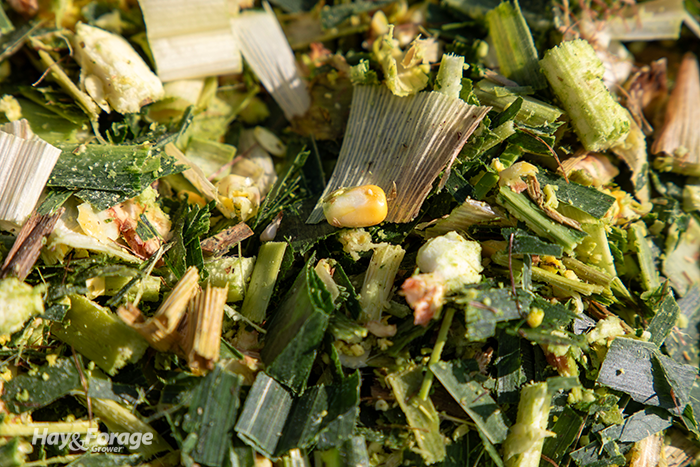
In the order of operations of feeding dairy cattle, forage quality analysis tends to be the step in between storage and feedout. Those test results define the end product of fermentation, which not only informs farmers of what they are feeding, but also how to feed it. With that said, quality analysis isn’t exclusive to the tail-end of forage production — especially in the face of challenging growing conditions.
Ev Thomas with the Miner Agricultural Research Institute in Chazy, N.Y., says much of the Northeast experienced a hot summer. Although some parts of the region have endured drought conditions the past few months, the retired agronomist notes other areas have received more rain than normal. It is this combination of excess heat and moisture that can impact corn silage neutral detergent fiber digestibility (NDFD).
Some sites may be better equipped to withstand high heat and heavy rainfall than others. For example, a well-drained soil can use excess moisture to its advantage to produce a high-yielding corn crop. But the question about forage quality remains.
“Even well-eared corn may have less than normal NDFD, while the quality of poorly eared corn could be terrible,” Thomas writes in a recent article of the Miner Institute’s Farm Report. “Where soil drainage is good, you may have high yields, but what of the quality?”
One solution to potentially improve corn silage NDFD during harvest is raising the chopping height; however, this won’t be an effective option for less mature corn. In addition to having less grain, immature corn can have relatively good stalk quality. Minimizing that stalk material won’t have as great of an impact on tipping the scale toward better NDFD as would be desired, and it will result in lower yields.
Get ahead of it
With that said, Thomas recommends testing corn silage quality before the crop goes into storage. Although starch digestibility will improve during fermentation, NDFD will remain relatively unchanged. Analyzing forage quality upfront will help predict what adjustments may be needed to balance dairy rations when it comes time for feeding.
“You won’t balance rations based on this analysis, but it should give you some idea of what lies ahead,” Thomas asserts.
Knowing corn silage quality in advance can also help producers determine whether to take a late season cutting of alfalfa or alfalfa-grass. Corn silage with less-than-ideal NDFD may justify the decision to take another cutting and feed more haylage in the diet.
Even so, Thomas says many farmers in the Northeast have reported having an abundance of hay this year. He encourages producers to assess their storage options and to consider alternative feed ingredients to make up for the nutrients that corn silage may lack.
“Work closely with your dairy nutrition consultant in determining how best to feed what could be a very challenging corn crop,” Thomas states. “Corn grain prices will likely be low, so corn meal could partly compensate for the reduced grain content in immature corn silage,” he concludes.

